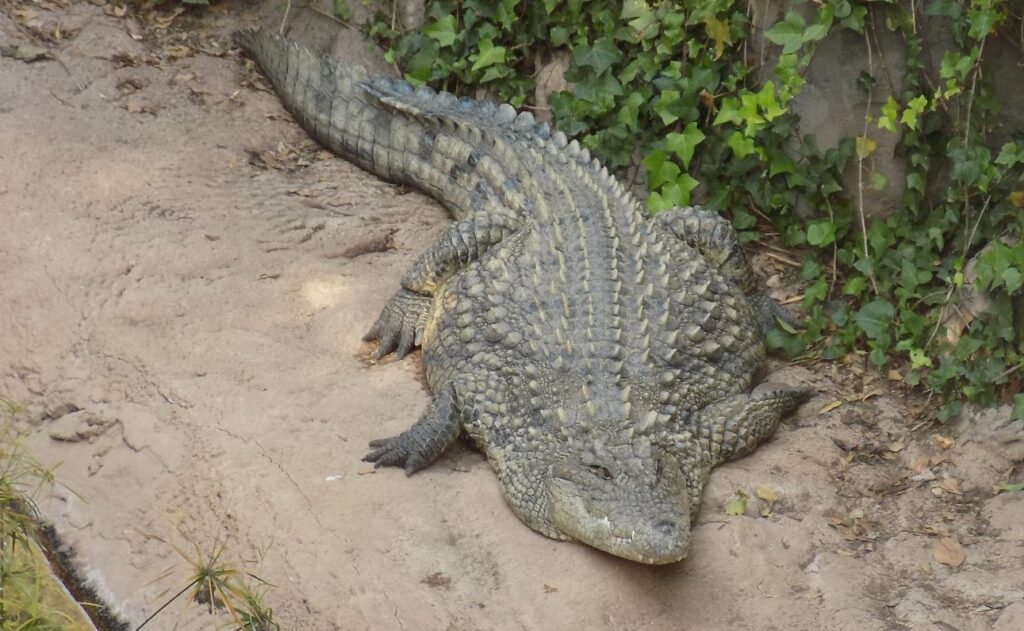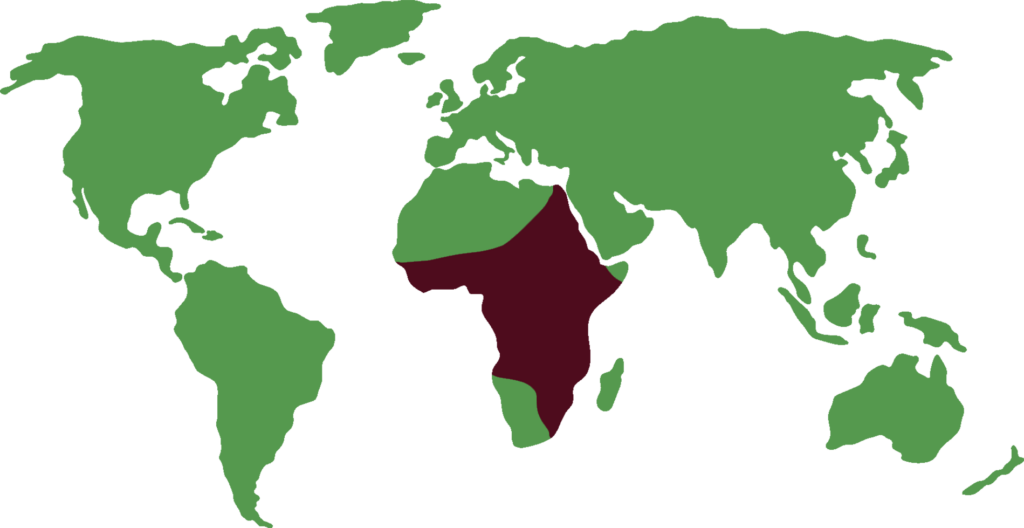NILE CROCODILE
Crocodylus niloticus

LENGTH

6 m
WEIGHT

225 kg
LIFESPAN

50 years
The Nile crocodile is a species of sauropsid of the Crocodylidae family. It is one of the four species of crocodiles that inhabit Africa, and one of the largest in size in the world, second only to the saltwater crocodile.
General characteristics
Like all crocodiles, the Nile crocodile is a quadruped with four short legs and a long, powerful tail. The skin is covered with scales with rows of ossified scutes running down its back and tail.
They are dark bronze on top, with faded blackish spots and stripes appearing variably on the back and a faded yellowish color on the belly. Young crocodiles are lighter in coloration and become darker as they age.
Depending on the habitat they are in, some variation may also occur. Those living in fast flowing water tend to be lighter in color than those inhabiting more turbid lakes or marshes, providing camouflage to suit their environment.
Feeding
They are agile hunters. Depending on the size of the crocodile, they can feed on small fish, frogs and invertebrates as well as large mammals and reptiles.
Behaviour
In general, Nile crocodiles are quite inert. They spend much of the day basking in the sun with their jaws open so as not to overheat. Although they can remain motionless for hours, they are constantly aware of their surroundings and the presence of other animals.
They are not very social animals, but may form groups in situations of limited resources or during the dry season. They even modify their habitat by digging dens in which they take refuge in times of adversity.
They capture prey that come near the lake or river to drink. It drags them into the water and drowns them. It shreds its prey by writhing in the water.
Reproduction
During the mating season, males defend a stretch of sand, shake their bodies and expel water from their nostrils to attract the female.
Females lay between 20-80 eggs one to two months after mating. They bury the eggs in sand or relatively moist soil and guard them during the three-month incubation period.
Hatchlings are very small, maximum 30 cm, and are protected by the mother for the first two years of their life.
Threats
Their populations have declined due to overhunting and conflict with humans. On the other hand, they are also threatened by habitat loss related to pollution and human activities.
Distribution
They are widely distributed throughout sub-Saharan Africa. They are typical of freshwater lakes and rivers.

Did you know?
Despite their size, they can move silently in the water thanks to the structure of their legs and fins.
They can stay underwater for long periods of time because they have the ability to store oxygen in their lungs and muscles.
They can consume dead animals which helps to avoid water contamination.
Conservation status
